Women in Vinyl + SoundGirls Webinar
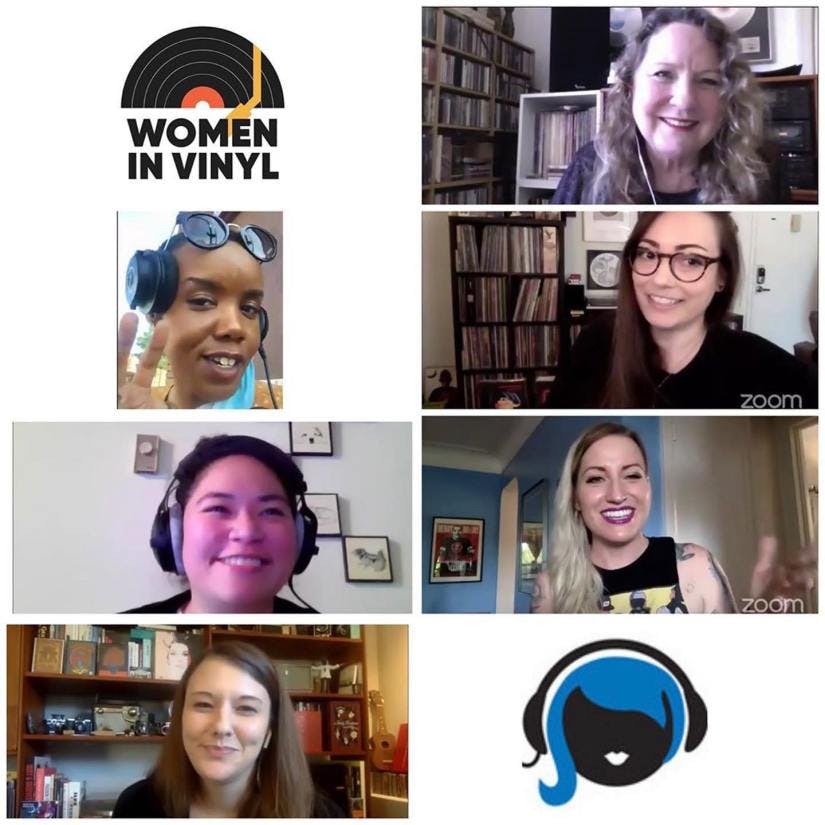
If you missed it last weekend, Women in Vinyl partnered with SoundGirls for a webinar on ‘Career Paths in the Vinyl Industry’. Our first but definitely not last foray into the webinar world. If you aren’t familiar with SoundGirls they are a professional advocacy organization aiming to empower women working in audio and music production, co-founded in 2013 by Pearl Jam’s monitor engineer Karrie Keyes, and audio engineer Michelle Sabolchick Pettinato, FOH engineer for Styx, Mr. Big and Elvis Costello. I feel very honored to have been able to do this with their support. Stay tuned as we work to host more of these diving into specific topics a little further.
If you weren’t able to catch the webinar, you can watch it below.
Link here as well. See end of the article for panelist bios and social media.
There were a lot of questions we weren’t able to get to so we are answering some of those below.
Questions
EDUCATION / GETTING STARTED
From Dorian Kester: “How would someone get started in cutting vinyl or working in that industry?”
Robyn: I’m sure Jett could expand on this one too, but it’s a very niche gig. It’s not really taught in school, it’s more an apprenticeship type thing. Depending on what kind of cutting you want to do. You could find a desktop Rek-O and start learning from there, or buddy up to a mastering engineer with a lathe.
Jett: I agree with Robyn. Vinyl cutting is a niche gig that isn’t taught in schools. It’s always been something you get into through apprenticeship. But with the current growth of the vinyl industry, I’m sure there’s a lot more opportunity to get into this, but I think the best place to start is by building rapport with people in the vinyl industry. Start by researching companies and vinyl professionals that are featured on websites like Women in Vinyl and conferences like the Making Vinyl conference. You can easily build rapport by following these companies & professionals on their respective social media pages. And many times, companies even post job listings there. So that’s definitely a good place to start. Also keep in mind, vinyl cutting is a small piece of the vinyl industry. You’d be surprised by all the different career paths that keep this industry thriving.
From Daniel: “What were unique challenges you faced getting into the record business? & What advice can you give to someone looking to get into the business as well?”
Robyn: It depends on what part of the business. Every little facet has a different way in, there is more opportunity than you might think. The great part about being in the industry right now, is that there is an abundance of information on the internet, at your fingertips. My best advice is to figure out where your skills can best be used, is it marketing? Touring? Booking? Selling records? Social media? Pressing records? Inventing a new formula for lacquer? Creating a new machine? The only limits are the ones that we make for ourselves, Subpop didn’t exist until those guys decided to do labels differently. Lathe cutting wasn’t a thing, until Peter King decided he wanted to figure it out.
From Shani Miller: For Amanda McCabe: Can you tell us about how you moved from archives into your position at Universal Music Group? Does being a former archivist inform the work that you currently do, and if so, how?
Getting music out into the world, now more than ever relies intensely on metadata. It’s the foundation of paying artists, tracking sales, and even just searching online for both physical and digital products. A lot of what I learned from the archival perspective was about the history of information management and the production of detailed metadata from both the technical and descriptive side. Being able to innovate in this sphere means knowing the past and seeing the potential down the road, especially as technology allows us to create new opportunities to use these data points in new ways. Although a lot of what I am working on currently isn’t specific to vinyl, it is all connected in the grand scheme of things.
Additionally, I had the opportunity to learn about the more technical aspects of different recorded sound carriers used through time and what issues they face now. This historical context and information are critical for problem-solving and innovating as we continue to connect artists with their fans.
From Julia McIntyre: “How did you get into the vinyl industry? Where did you look for and find positions? What advice do you have for students who are considering working in the vinyl industry?” + From Evelyn Cools: “Do you think the vinyl industry is worth focusing on for a fulfilling and successful career? What advice do you have for someone who has little experience with the vinyl industry, but would love to get their foot in the door?”
Like we alluded to on Saturday, work to identify where your strengths are, and see what part of the industry is appealing to you. Look for where your gifts or passion can shine, and then be open to opportunity from there. For students – work at a record shop, or a music store, learn gear, be around music as much as possible.
Jenn: I agree with Robyn and the other panelists where following your passion will get you far. Take a look back on some of the interviews I’ve shared on Women in Vinyl, and see what seems like the most exciting to you. Look for internships or a mentorship, don’t be afraid to reach out or put yourself out there at conferences. Also, you may not immediately walk into the dream job; so be willing to start at the bottom, and work other avenues to get your foot in the door. There are also some great resources like the A2IM job board, and the NAMM job board. I also suggest setting up for google alerts for job opportunities at certain places you may want to work. There are so many avenues within the industry and if you love music and want to be involved in the creation of a beautiful physical product it can be a very fulfilling and exciting career.
Jett: For anyone with little to no experience wanting to get in the vinyl industry, I think the first step is to take the time to know more about the world of vinyl, and you can easily do that by leisurely reading the profiles of vinyl professionals featured on the Women in Vinyl website. From QC engineers, record store owners and DJs to archivists, mastering engineers, and pressing plant sales managers, you get a quick glimpse into all the opportunities you can pursue in the vinyl industry. If there’s a particular career path that speaks to you, build rapport with the professional in that field. Starting from there could already potentially open opportunities to get your foot in the door.
Michele: “I’m 18 and very interested in recording engineering. What advice do you have for me/what do you wish you had known when you were just starting out?”
Jett: Keep an open mind! Audio engineering is such a vast career field. I didn’t realize this when I was just starting out. For many young aspiring engineers, there seems to be a notion that the only career path is to work in a commercial recording studio, make beats and hit records. But there’s such a rich variety in opportunities you can pursue! Live sound, audio forensics, re-recording mixer for TV/Film, sound design, archiving, etc. While you’re still young, the best thing to do is expose yourself to as many of these career paths so you get a better chance of finding that ONE path that really lines up with your skills and passion.
Molly Warncke: “Nearly all of my experience in the music industry has been in the studio or live sound – how can skills as an engineer / producer be transferred over to working in the vinyl industry?”
Jett: Audio engineering skills are essential in the vinyl industry. Similar to working in live sound, working with vinyl is a tactile process that requires both critical listening & physical work. You’re not just in a studio working in front of a computer. You’re working with a tangible product, ensuring that the music not only sounds good, but that there’s minimal issues when it comes to the quality of the physical format. Whether it’s in vinyl cutting, electroplating, or pressing, there’s always a need for an audio engineer’s skill set.
JOBS IN VINYL
Ann-Kristin Blanken: “I’m curious about what different jobs are involved in working with vinyl?”
Jenn: Take a look back through some of the posts on Women in Vinyl. There are so many opportunities! Making vinyl involves a team and so many hands touching the product. Opportunities start with things like cutting, electroplating, working at a vinyl focused record label, to working at a record pressing plant (sales / production / quality control / pressing). Then there is also the design aspect, working at a printer that prints for vinyl or designing for artists and record labels. Finally there are record stores, distribution centers, to DJs and archivists all are involved in some way to getting and keeping vinyl in our hands and on our turntables.
Jett: There’s a wide range of opportunities that fit many different backgrounds. Vinyl cutting, electroplating, pressing/QC, marketing/sales, archiving, design, working for a record label, working for a record store, running your own record store, DJ, the list goes on! The best way to know all the possible opportunities is by reading through the profiles of women working in all these different career subpaths on the Women in Vinyl website.
ABOUT THE VINYL FORMAT / WHAT’S SO SPECIAL ABOUT IT:
Kate Foretek: “Why such a love and cult following over a specific medium, and what can we all do to preserve our collections? Is there a difference between sizes, dates of press, etc? What do needles have to do with it? Looking forward to it!”
To keep your collection in its best possible shape, I recommend buying archival quality sleeves and a good record brush. Store your records on shelves sitting upright on the bottom edge and ensure they are not too dense on the shelf. You want them to sit up but also slide easily on and off the shelf. If you’re going to be serious about it, be careful not to blow on your records as tiny particles in your mouth can end up in the grooves and always avoid touching the grooved surface areas. Otherwise, vinyl really is forever, which is one of the reasons why it’s so wonderful!
Jessica Berg: “Any tips on how to restore vinyl that has had moisture/mold damage? What is your favorite thing about working in the vinyl world?”
Great question! Water damage and mold a big concern from an archival perspective. While a vinyl record itself is less likely to be significantly impacted by mold, the sleeves are more problematic. You can wash your records to remove active spores and debris using a “record washer” set-up, but you can also carefully wash them by hand. If you have a lot to clean, you might find a center label saver handy for the process. There are commercial cleaning solutions that work reasonably well and are adequate for most situations. Professionals use a surfactant called Tergitol if you have rare recordings or a special situation. Use distilled water for washing and rinsing.
Sleeves are paper, and there is currently no easy to achieve process to remove all mold spores from paper. Decide if you should keep the cover based on how much damage is present. You can put the jackets and inserts out in the sun. Sunlight will kill active spores. Then wipe clean and/or HEPA vacuum areas where there has been mold growth. Do this outside in a well-ventilated area, wear a mask and gloves. Consider sealing clean jackets in sealable envelope style archival polymer sleeves. Consider keeping the vinyl in a new clean paper inner sleeve stored on the shelf in its own separate archival polymer sleeve next to the sealed jacket. Again this depends on how much damage and mold are present and how sensitive you are to mold; there is a lot to consider.
For more professional level details, you can refer to:
The CLIR Guide: https://www.clir.org/pubs/reports/child/sound/
The Library of Congress: https://www.loc.gov/preservation/care/record.html
BENEFITS OF RELEASING A VINYL RECORD
Jess Ramirez: “From a label perspective, what are the benefits in putting out vinyl versions or artists’ work? What are some ways to market vinyl?”
In my experience, especially in the pandemic, fans are really missing that interaction – the live interaction – with their favorite artists. So in order to bridge that, artists make and release vinyl to enable the fan to have a tangible experience. Something to take with them, that IS the artist. Vinyl has a cult following already, but sometimes it is genre specific, there are some program materials that just do not translate well to vinyl. It’s a market research thing, you need to understand your customer base, who your label has on it’s roster, as to if vinyl is going to be a thing for the label/artist. It can be a tremendous expense, and it’s not always going to break even. Sometimes you do it, just for the cool factor.
Jett: +100 what Robyn said. To add further to how important the “tangible experience” is, we’re heading towards a future in the music industry where ownership of music is essentially going away. You don’t own any of your music through streaming. Even with a premium account, once the artist/label decides to stop streaming, your offline download goes away as well. Vinyl records are a great way for any listener to own the music and support the artist. In fact, the growing demand for streaming has also helped increase the sale of vinyl records! I like to think of it as streaming being great for music discovery, which then leads to music enthusiasts wanting to buy the record. And from years of speaking with our vinyl clients, vinyl sales consistently sell out first whenever musicians go on tours.
Jenn: I too have to second and third what Jett and Robyn said. As someone who works on the sales side and also collects records, during a time of quarantine and no shows now more than ever I want to have something tangible with artwork and liner notes to read. Budget of course is always a factor, but I know I personally never stream music at home I always play a record, so if a new release comes out I am immediately looking for a vinyl release.
STATE OF THE VINYL INDUSTRY / INNOVATION
UJIN Kim: “There’s a great new tool called Phonocut coming out via creator Kamran from Los Angeles. I see new technologies adding to the vinyl renaissance but what do you believe will lend itself to future innovations?”
Jett: There’s a lot of vinyl R&D that’s been going on worldwide, and many of those are actually picking up speed after the recent Apollo Masters fire which caused the shutdown of 1 of only 2 sources of lacquer/acetate discs in the entire world. Now the only main source of lacquer discs is from a small company based in Japan. I think innovations particularly in acetate/lacquer disc formulations, and innovations behind cutting styli designs are what’s gonna have the most impact when it comes to advancements in the future of vinyl.
Lee: “How has the vinyl space evolved in the last decade? Where do you see it going in the next 10?”
Jett: The last decade has always dealt with the lingering question of when the vinyl renaissance is gonna end. But all signs in the music industry point to a future where the vinyl format and the desire for physical ownership of music is here to stay! Record labels now include the vinyl format as a standard for their artists. More indie artists and niche genres have now been releasing their music in vinyl as well. My favorite example is the vibrant community of vinyl enthusiasts in the video game music world. Video game music LPs also consistently have the best and most creative packaging. As for the future, I expect the continuing expansion of pressing plants, hopefully making the format more affordable for the indie musician, and the turnaround time for the format much quicker.
Jenn: Like I mentioned in a recent interview with Jaxsta I think that with more people wanting to get involved specifically for the creation of vinyl and with it being the main way people are listening to music again there are a lot of opportunities for innovation. If we can start within the actual education system and support STEM education specifically, people will starting thinking outside of the box for the industry before they even step foot into it.
I also think as the industry continues to grow we need to expand from seeing internships as doing your time in the front of house only. As an example, think about who is applying for jobs as a press operator. Is anyone applying passionate about it from the start, or do they know anything about running a record press? Probably not. It’s usually someone just taking a shot thinking, this might be different. So there is a steep learning curve. There are a lot of intricacies involved in record pressing – how to adjust the press to create a flat, good sounding record, how to create cool new effects while also pressing a quality record. What if internships like that were available and people were excited about actually making a record, what would that look like for innovation?
LONGEVITY OF THE VINYL INDUSTRY
Sandy Espinoza: “Is this a niche market or do you see it growing?”
Jett: I mentioned this in a previous question. I do believe the vinyl format is here to stay and will continue to thrive. We’re heading towards a future in the music industry where ownership of music is essentially going away. You don’t own any of your music through streaming. Even with a premium account, once the artist/label decides to stop streaming, your offline download goes away as well. So the desire for physical ownership of music will be the main catalyst for the continued presence of the vinyl format.
Jenn: I definitely see it growing! There are reports and articles showing vinyl outselling downloads. People want that tangible format again like Jett mentions. When we go so far one way into a world where you can literally do everything online there are certain things like vinyl that you want to own. A lot of small pressing plants are starting to pop up, a ton of new labels and artist management companies as well. I don’t see it going anywhere anytime soon.
INVOLVEMENT IN SOCIAL JUSTICE ISSUES
Madalyn Stefanak: “Do you see connections between the vinyl industry and the Black Lives Matter movement? How can we work to make a more anti-racist vinyl industry?”
Jett: Would love for Brittany to share more about what she discussed during the panel about this topic. But I’d also like to add that because of the growing demand for vinyl records, protest music is becoming much more accessible in this physical format. I recently mastered and cut the upcoming vinyl release of Resistance Revival Chorus, a collective of women & non-binary artists and activists who sing protest music in the spirit of joy and resistance. Their latest release “Ella’s Song” is a tribute to the Black Lives Matter movement, with 100% of the profits being donated to the Movement for Black Lives.
VINYL PRODUCTION PROCESS
Leslie Gaston: “So you’ve mastered your album for vinyl – who’s does it go to next?”
Jenn: First plan ahead. The process can take some time so you don’t want to set your physical release date for two weeks out, especially if you plan to drop your digital and physical at the same time. Planning, as hard as it can be to wait to show off your work, will make your life so much less stressful.
Next, decide how you’re going to release it and the budget. You’ll want to work with your label or get quotes on your own from pressing plants for manufacturing. Make sure you work with them to understand what is included in that quote and what their turn time is (remember planning ahead) to include shipping that product to you. For example are you getting the full service from cutting / plating / pressing to the vinyl jackets / assembly / shrink-wrap. Is it DMM or lacquers. Are you just getting cutting / plating / vinyl, and no print, etc. Is your product shipping domestically within the US or the country you’re in or is in coming by boat. There are so many steps in manufacturing that you want to make sure you’re giving it time, it can’t really be rushed. Then decide what makes sense for you and your release.
You will also want to work with a designer to make sure art is in the templates for the plant you decide to use and that it matches the quotes that you are receiving. This is another thing that will just make your life easier. Some plants do have in house people that can assist as well for a fee.
Jett: I think the first practical step is to discuss the budget and timeline of the artist. Not many people realize how much it costs to get a vinyl release going, and that you typically need at least 3 months to make sure you don’t miss your release date. After knowing these details, it should be easier to decide what the next step is. You’d either want to work directly with a vinyl broker who can do all the leg work for you, or you can work directly with a vinyl cutting facility or pressing plant to ensure that all the cost goes directly to the quality of the LP. The latter option requires more work in the logistics, but you have more control over the final output with less overhead.
Nancy Scharlau Murman & Lee: “What are some considerations when preparing a mix for vinyl mastering? What is different about mastering for vinyl in terms of frequency response and compression and what are other things to look out for when preparing for vinyl?”
Jett: The vinyl format has some notable quirks that’s worth knowing when you intend on releasing your music on vinyl. I’ll briefly list them below. But it’s worth remembering that this should inhibit you from the creative music production process. Many times, the vinyl cutting facility and pressing plant have tools that address these issues themselves so err in the side of caution when choosing to make production decisions simply because of knowing about these vinyl quirks.
- Sibilance – It can potentially cause distortion on a vinyl record
- Low end phase effects – Low end stereo imaging effects in your mix could cause the groove to cut very thinly, causing the record to skip
- Duration of music per side – The longer the music, the farther in your music gets cut in a record. The inner diameter of a disc distinctly has lower resolution so the highs in your music may end up sounding brittle. You can prevent this by making sure your music doesn’t go longer than 20 minutes per side.
- Programming of the music per side – Related to the previous quirk, if possible, it’s best to program your music so that the more energetic, louder songs are closer to the start of each side rather than left at the end.
I go over each of these quirks in greater detail in an article I wrote last year. I highly recommend giving it a read! “Mastering for Vinyl”
Katie Hildreth: “Do you see any more creative options in packaging and finishing opening up?”
Jenn: Absolutely! I work with a couple of video game labels that do fantastic packaging with all kinds of unique details. We quote and work on a ton of packages with unique print. The only thing that can cause these to not hit the market is honestly just budget for the project. I am also seeing a lot of people doing slip cases more often for things that aren’t normally box set type packages, and the OBI spine is coming back more and more.
Other Resources:
COMMUNITY
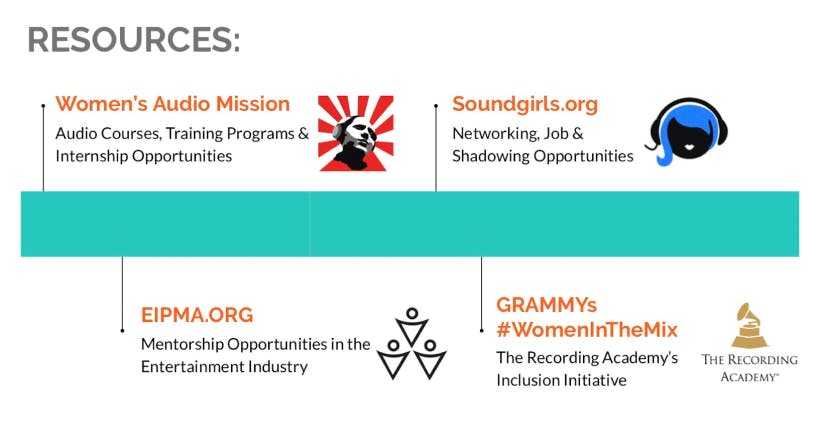
Association of Recorded Sound Collectors (ARSC): http://www.arsc-audio.org/index.php
EQL – A global directory of women and LGBTQ+ in various fields of audio/sound: https://makeiteql.com
VINYL PROCESS
Mastering for Vinyl 101: https://www.izotope.com/en/learn/mastering-for-vinyl-tips-for-digital-mastering-engineers.html
Vinyl 101: https://www.furnacemfg.com/how-to-make-vinyl-record/
Panelists Include:
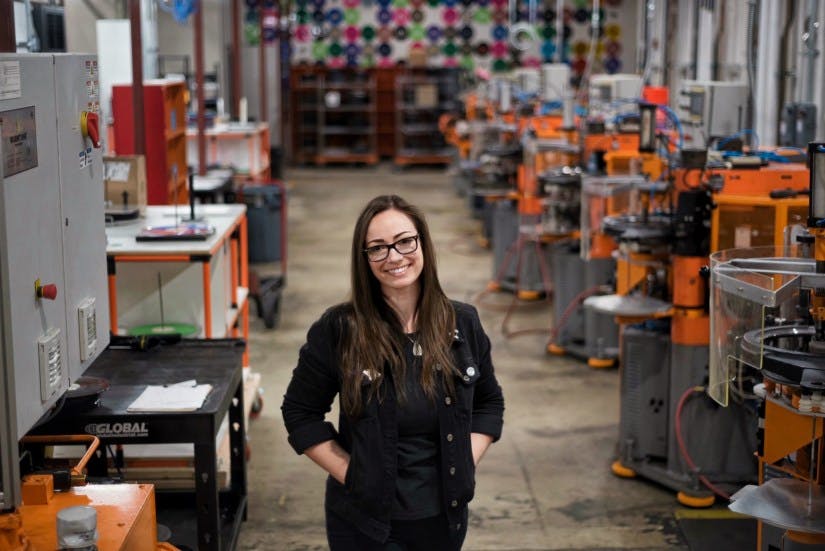
Jenn D’Eugenio – Founder, Women in Vinyl | Chief of Sales, Furnace (Alexandria, VA)
The sales manager at Furnace Record Pressing, and vinyl enthusiast for over 20 years, Jenn is the founder and curator of ‘Women In Vinyl’; and is dedicated to the art and creation of vinyl. Her background spans that of designing textiles for Fortune 500 fashion companies to career advising for one of the top art colleges in the country; however, Jenn’s passion for vinyl has lead her to a career in helping to manufacture the physical product for bands, and both major to independent record labels. In launching Women in Vinyl a site, online community, and future non-profit she hopes to empower women working in the vinyl industry and to help young women who may be interested in this career path achieve their goals.
Instagram:
Jenn: @jennn_erator
Women in Vinyl: @womeninvinyl
Furnace Record Pressing: @furnacemfg
Mistress of Reality: @mistressofreality
Facebook:
Women in Vinyl: @womeninvinyl
Furnace Record Pressing: @furnacemfg
Website:
Women in Vinyl: You’re here!
Furnace Record Pressing: www.furnacemfg.com
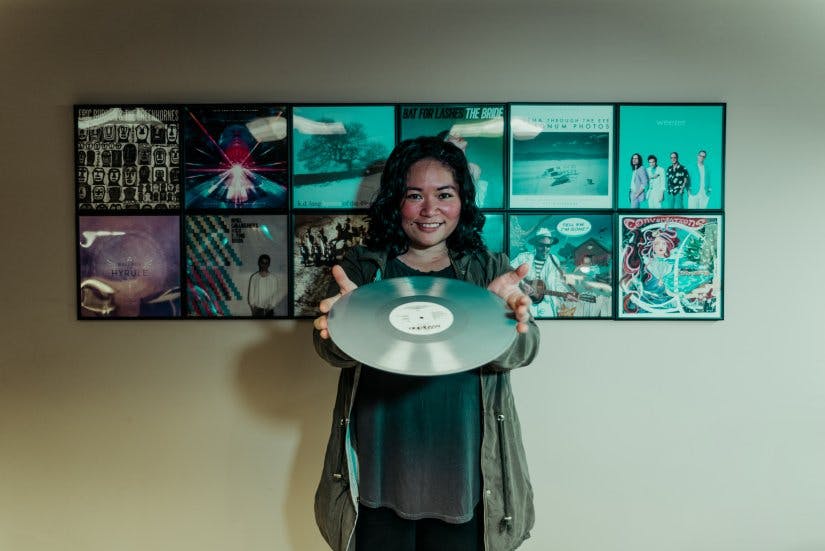
Jett Galindo – Mastering Engineer, The Bakery (Los Angeles, CA)
Los Angeles-based mastering engineer and vinyl cutter, Jett Galindo of The Bakery, has worked on albums spanning a wide array of genres and artists (Barbra Streisand, Haley Reinhart, Weezer, the La La Land OST, to name a few). Jett Galindo carries on the legacy left behind by her late mentor, mastering legend Doug Sax (The Mastering Lab). Recipient of Summa Cum Laude honors and the 2012 Robin Coxe-Yeldham Audio Scholar Award from Berklee College of Music, Jett Galindo was mentored by luminaries in the music industry including George Massenburg; producer Prince Charles Alexander; recording engineer Susan Rogers (Prince’s Purple Rain); and mastering engineer and AES President-elect, Jonathan Wyner. Jett kickstarted her post-Berklee engineering career in the world-renowned Avatar Studios in New York (now known as Power Station) as the recording engineer for producer Jerry Barnes. As Barnes’ engineer, Jett engineered for veteran artists such as legendary singer-songwriter Roberta Flack, Nile Rodgers, Bashiri among others.
Jett’s dead wax signature: JG
Instagram:
Jett: @jettgalindo
The Bakery: @BakeryMastering
Twitter:
Jett: @jettgalindo
The Bakery: @bakerymastering
Facebook:
Jett: @jett.galindo
The Bakery: @Bakery Mastering
Website: https://thebakery.la/
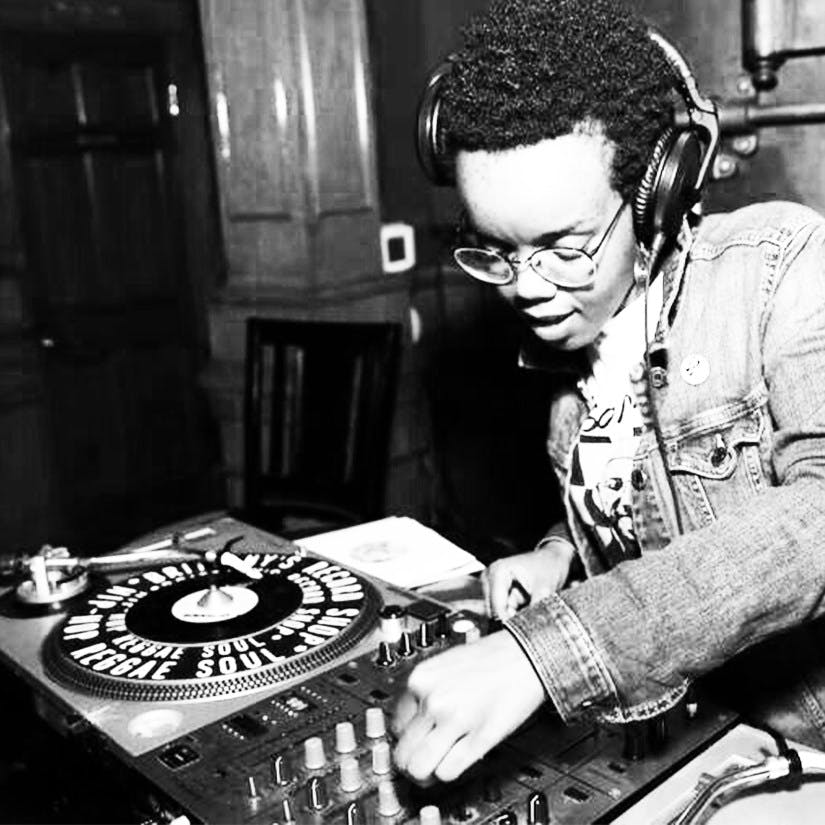
Brittany Benton – Record Store Owner + DJ, Brittany’s Record Shop (Cleveland, OH)
Producer and DJ as DJ Red-I as well as the owner of Brittany’s Record Shop; Brittany is an independent record store owner specializing in hip-hop, reggae and soul out of Cleveland, Ohio.
Instagram:
Brittany’s Record Shop: @brittanysrecordshop
DJ Red-I: @djredibeats
Facebook:
Brittany’s Record Shop: @BrittanysRSCLE
DJ Red-I: @djredibeats
Website:
Brittany’s Record Shop: www.brittanysrecordshop.com
DJ Red-I: www.djred-i.com
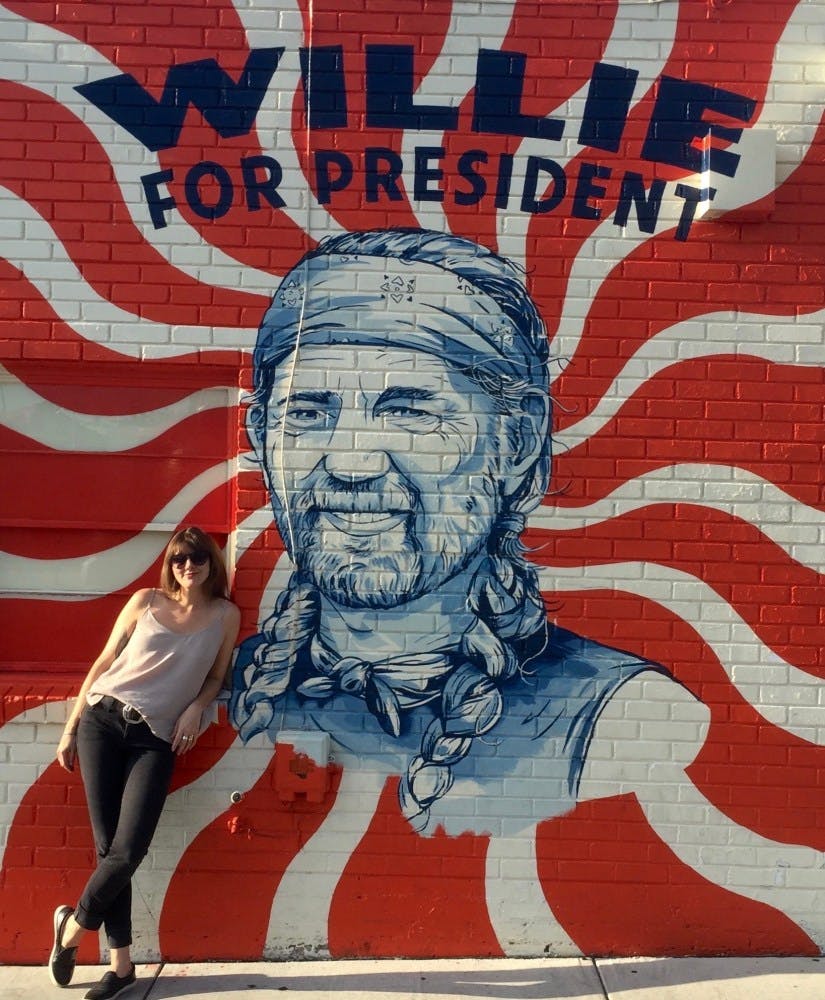
Amanda McCabe – Former Archivist, The Association for Recorded Sound Collections | Metadata, Strategy & Tactics, Universal Music Group (Seattle, WA)
Amanda is a record junkie, music history archivist who continues to find new ways of contributing to the music industry’s changing landscape. Her work’s core mission is always focused on connecting fans with more music and getting artists paid. She is the Archives Committee Chair & Video Editor for the Association For Recorded Sound Collections (ARSC) and recently joined Universal Music Group’s Strategy & Tactics Team to focus on new products.
Instagram: @hi5living
Website: www.hi-5living.com
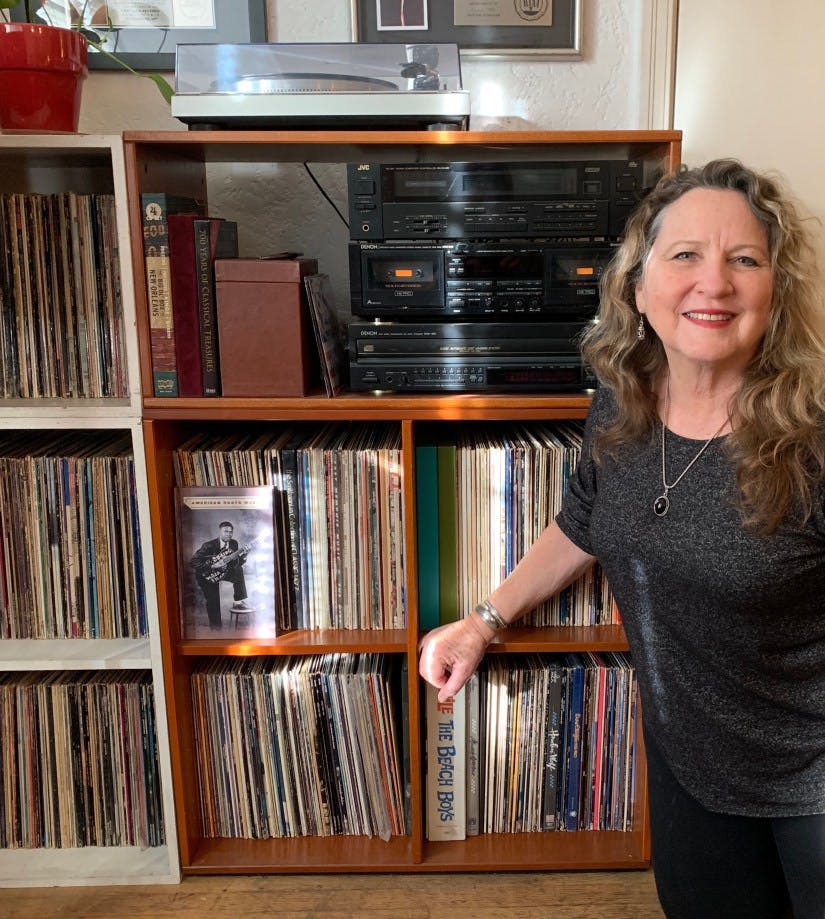
Lenise Bent – Producer & Recording Engineer (Los Angeles, CA)
Lenise is a groundbreaking recording engineer, known for her work on many iconic records including “Aja” by Steely Dan, “Breakfast in America” by Supertramp and “Tusk” by Fleetwood Mac. She was also the first woman to receive a platinum album for engineering on Blondie’s AutoAmerican. Since then, Lenise has moved into post-production audio, beginning with the entire Disney cartoon catalog, eventually specializing in recording and editing Foley. She has also traveled the world for Dreamworks supervising and producing the foreign dialogue and vocals for “Shrek,” “Spirit: Stallion of the Cimarron” and “Shrek 2”. This rekindled her love of recording music, and she is now engineering and producing up and coming musicians as well as seasoned artists. Currently, one of her projects, a blues/rock band called the Primal Kings, is all-analog, recording and mixing to tape and cutting vinyl.
Instagram: @lenisebent
Facebook: @lenise.bent
Website: www.wikipedia.org/wiki/Lenise_Bent
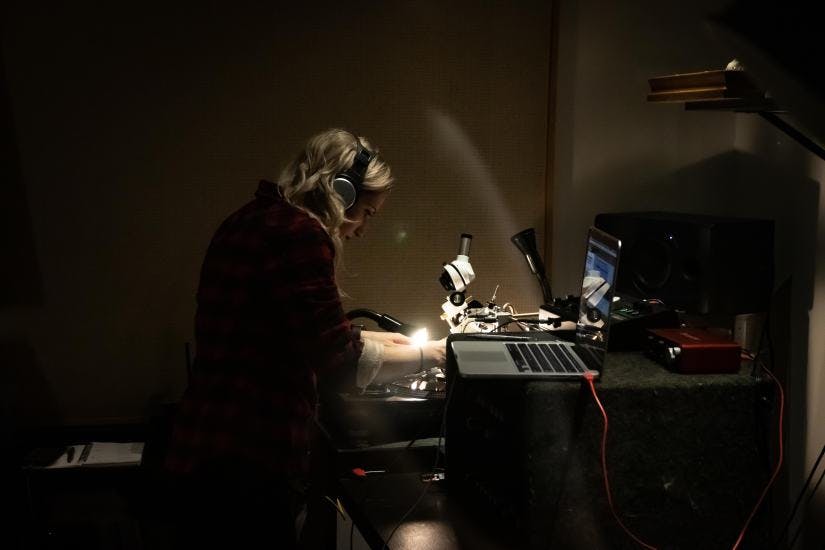
Robyn Raymond – Lacquer Cutter, Red Spade Records | former QA Engineer, Precision Record Pressing (Ontario, Canada)
Owner of Ontario based Red Spade Records, Robyn is the only female record cutter in Canada. She cuts short-run, lathe cut records on a desktop Vinyl Recorder T-560, apprentices on a VMS70 and formerly worked in the QA department at a Precision Record Pressing.
Robyn’s dead wax signature: R2
Robyn: @bobbie403
Red Spade Records: @red.spade.records
Facebook: @redspaderecords
Website: www.wecutwax.com
We hope you enjoyed this content! If so inclined please donate so we can continue bringing you more like this. There is no amount too small.

